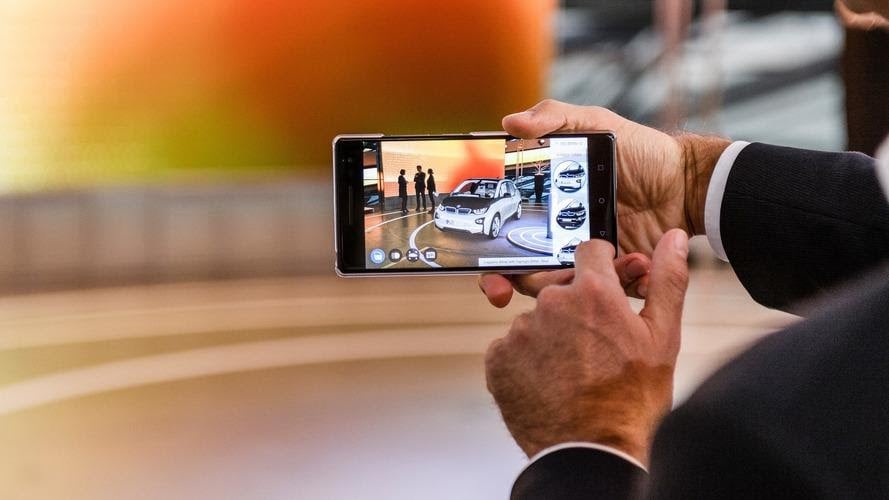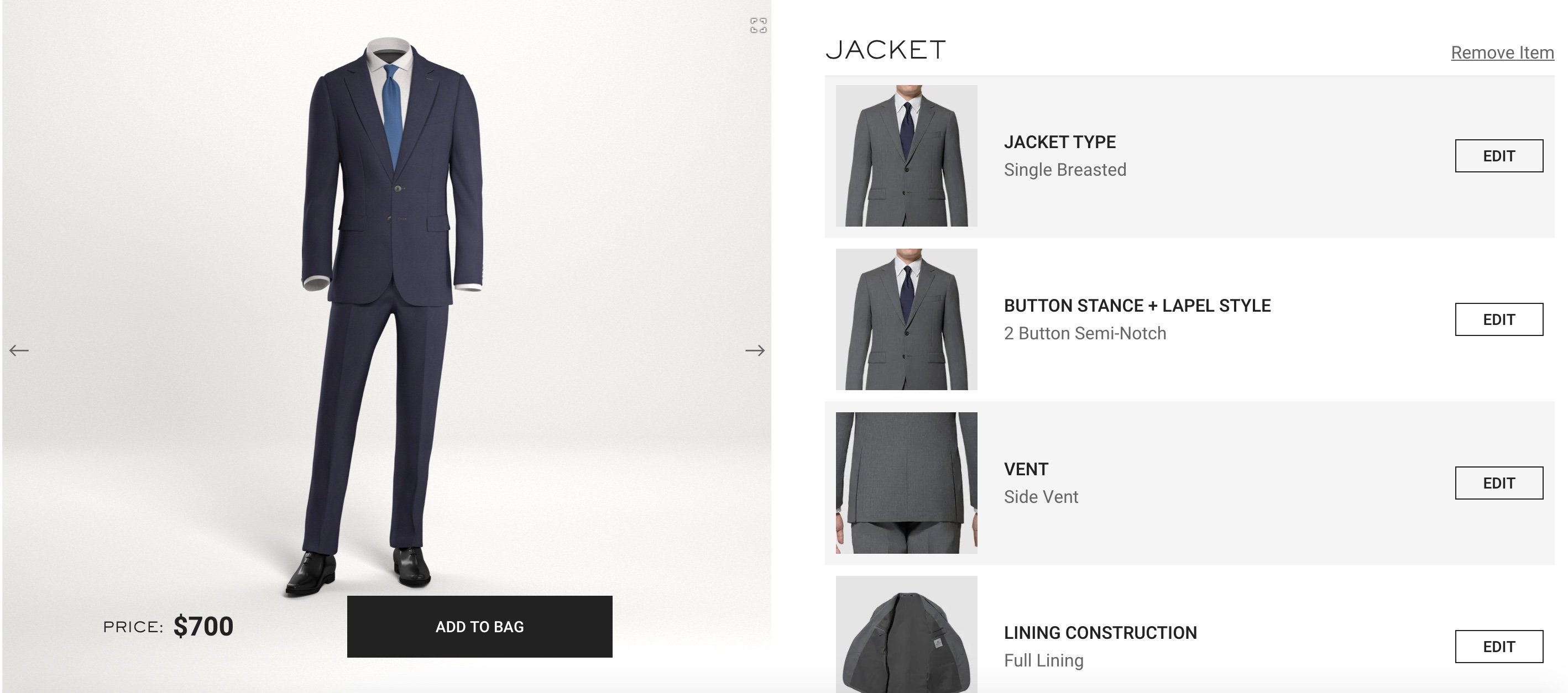How Shopify 3D Product Customization Boosts Sales
With the recent health crisis pushing retailers to expand their brick-and-mortar stores online, Shopify merchants have to rethink their strategies to fend off new competitors and boost sales. Virtual sales through 3D product customization is emerging as an ideal differentiator that unlocks sales opportunities for Shopify merchants. According to Shopify's internal data, leveraging 3D and AR can increase conversion by up to 250%.
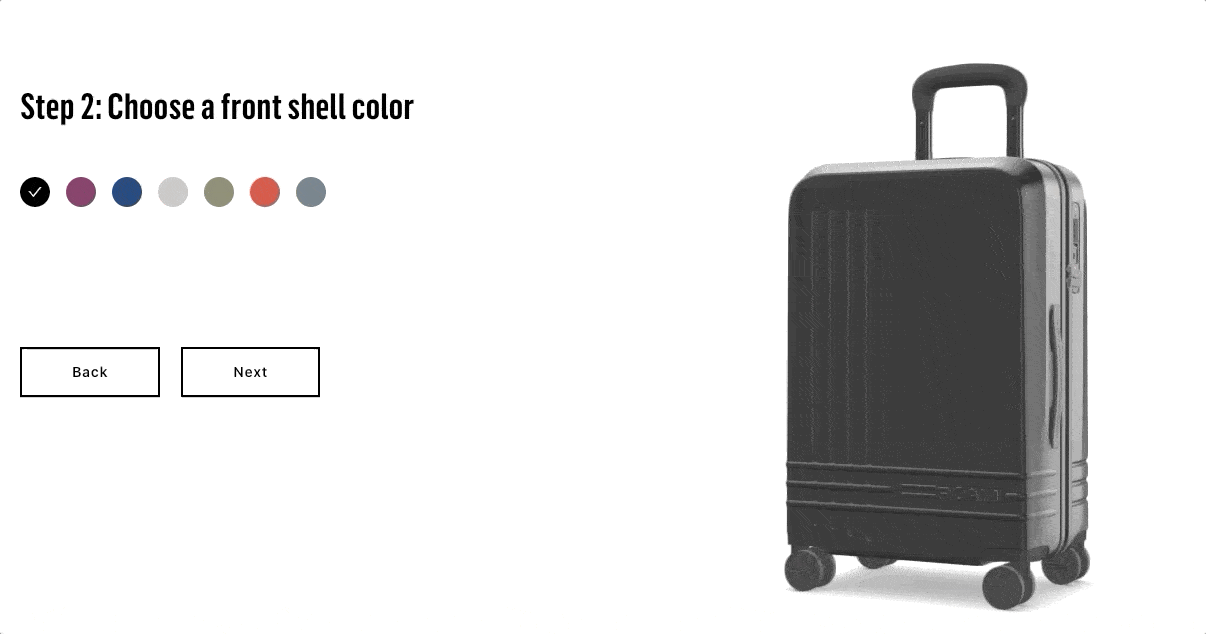
Shopify 3D Product visualization (threekit.com)
A Shopify product customizer offers merchants a powerful way to present their products to the customer . Leveraging 3D and AR for visualization can enhance the perceived value of the product and influence customers' purchase decisions positively. How should merchants implement Shopify product visualization to boost sales?
Choosing the Right Platform for Shopify 3D Product Customization
To leverage your Shopify 3D product configurator more effectively, you need a visualization platform with the solutions and technologies to address specific challenges in your store. The four most important tools to consider when you build a Shopify 3D configurator include a virtual photographer, product customizer, 360-degree product viewer, and augmented reality. The platform should integrate with Shopify seamlessly and offer a pre-built connector that plugs directly into your ERP. This integration will allow you to implement and leverage all four solutions more efficiently without the need for additional training or assistance from an expert. By giving you full control of product visualization, presentation, and customization from start to finish, Shopify can save you both time and money.
With a unified visualization platform, you can use a virtual photographer to create high-quality photos of your products. The platform should also let you leverage 3D models for your configurations or customizers. If your products are highly customizable, a unified platform with features like Bill-of-Materials (BOM) that work with your ERP will help you to create the components and parts you need to build a Shopify 3D configurator. For example, Xenith Helmets used a Shopify configurator to create parts for its helmet.
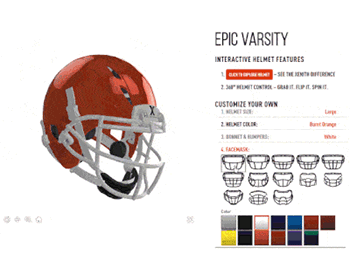
You can also include a 360-degree viewer in your Shopify product customizer for online shoppers to rotate the product and inspect it extensively from all angles. A unified visualization platform also allows you to power 3D models using Shopify AR to bring your products to life. You can implement each of these solutions all by yourself if you use a quality platform and software that is built to integrate with it.
How to Implement a Shopify Product Customization in Your Store
Before you implement a Shopify customizer, analyze your inventory from customers' perspective to determine the products that can benefit from customization. For example, complex mechanical products like bicycles are more likely to benefit from a customizer than a simple toothbrush. Once you have a list of products that need customization, visit the Shopify Expert marketplace and find an expert in 3D model creation. You will need to provide images or product rules like materials, colors, and features for the expert to create master 3D files for your products. Then, your 3D files and rules are uploaded on a Shopify visualization platform to create pixel-perfect 3D renderings of your product. Lastly, your Shopify customizer will bring the rules and components together into a single user experience.
A Shopify 3D configuration is powered by a rules engine, which makes it easy to update and allows you to customize your products without coding. You can use parametric configuration to leverage unlimited flexibility in width, height, and depth for engineering-to-order to meet your design parameters. If you're dealing with complex products, a nested configuration can merge configured products to help simplify the process for you. You can upload 3D configurations of your products instantly and start selling since the platform plugs directly into your ERP.
You can use product designs to create photorealistic images and deploy them to your storefront long before a product is manufactured. Customers can start ordering from your store while your competitors are still waiting for the product to be delivered and undertake product photoshoots before they start selling. You can concentrate on selling while your competitors are still looking for a professional photographer. It gives you a substantial head start ahead of the competition, which is a huge advantage in eCommerce.
How to Leverage Shopify 3D and AR in Your Store
Shopify product configurators are versatile and can deliver different types of visualizations. You can use your 3D configurator as a Shopify product visualizer, customizer, or AR-enabled 3D models to bring your products to life. A Shopify product configurator is robust enough to meet all your needs regardless of the complexity of your products.
1. Shopify 3D Product Visualizer
If you offer simple products that don't require customization, you can use a Shopify 3D product visualizer to help the customer inspect the product extensively. A visualizer can present products from any sector very effectively on the storefront. For example, you can use a visualizer to display t-shirts on a hanger, just like in physical stores.
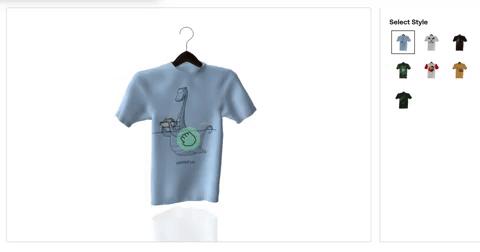
Visualizers are designed with a 360-degree viewer that allows the customer to rotate and inspect the product from all angles. Customers can also zoom in on specific features or enlarge the product to enhance their understanding. Giving customers all the information they need can enhance their confidence in the product and encourage them to purchase. A product visualizer can help customers make purchase decisions quickly, increase the perceived value of products, and shorten the sales cycles leading to higher sales.
2. Shopify 3D Product Customizer
You can also implement a product customizer on your site to give your customers control in the design process. A Shopify configurator allows you to create different parts and components of your product. You can deploy the parts as custom options on an interactive 3D rendering to enable online shoppers to customize or design products to meet their unique needs. For example, ROAM Luggage implemented a Shopify product customizer in its store to allow potential buyers to customize its suitcase down to the finest details like the color of the zipper.
.edited.edited)
ROAM's luggage customizer gives the customer control (roam.com)
There is a lot of data that suggests a customizer in your store can help entice window shoppers to purchase products. First, 32% of customers demand customized offerings. Second, 80% of customers prefer to purchase from brands that offer personalized experiences. Third, customers are more confident and willing to purchase their own creations and can pay up to 19% more for products that they help create. With a Shopify customizer, you can meet consumers' demand for customized offerings, personalized experiences and allow customers to create their own products.
3. Shopify Augmented Reality
Shopify AR delivers the capabilities to bring products to life for all merchants on the platform. If you integrate Shopify 3D product visualization software on your site, you can power interactive 3D models using AR to juxtapose online products in the customers' environment. For example, Instant Pot highlighted the features of its pressure cooker using an AR-viewable 3D model.
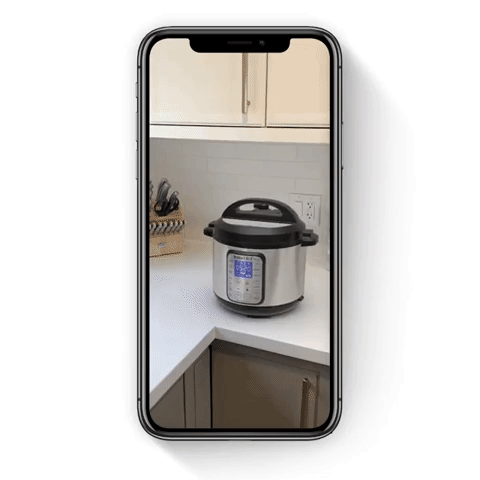
Leveraging Shopify AR and 3D simultaneously enables potential buyers to understand Instant Pot's cooker personally. They can place the cooker in their kitchen to see it in context or dive in on specific features for better understanding.
According to a 2019 survey, 51% of consumers are willing to use AR to assess products online, and 40% of consumers would pay more for a product if they are able to use AR to explore it first. This is because AR experiences create a sense of ownership and enhance emotional attachment and confidence in the product, which influence shoppers' purchase decisions. AR-viewable 3D models can drive sales for B2B and B2C, boost brand loyalty, enhance customer satisfaction, reduce returns and bad reviews, and improve user experience.
Conclusion - How Shopify 3D Visual Product Configurator will boost your sales
As a merchant on Shopify, your store's conversion rate is influenced by user experience. Did you know that 88% of customers may never return to your website after a bad user experience? Shopify 3D virtual photography, product customizer, and AR-viewable models can help streamline the factors that influence user experience in your Shopify store. The benefits are many:
- Differentiate your store from the competition.
- Improve product presentation to influence customers positively.
- Improve communication between you and your customers.
- Integrate your online and physical store seamlessly.
- Help customers to understand your products better.
- Drive engagement in your website.
- Reduce transactional interaction and shorten the sales cycle.
- Deliver customized offerings and personalized experiences.
ThreeKit offers Shopify product customizer with photorealistic images, interactive 3D, a 360-degree viewer, and augmented reality experiences that can help entice first-time buyers. To learn more, contact us to schedule some time with one of our teammates.
